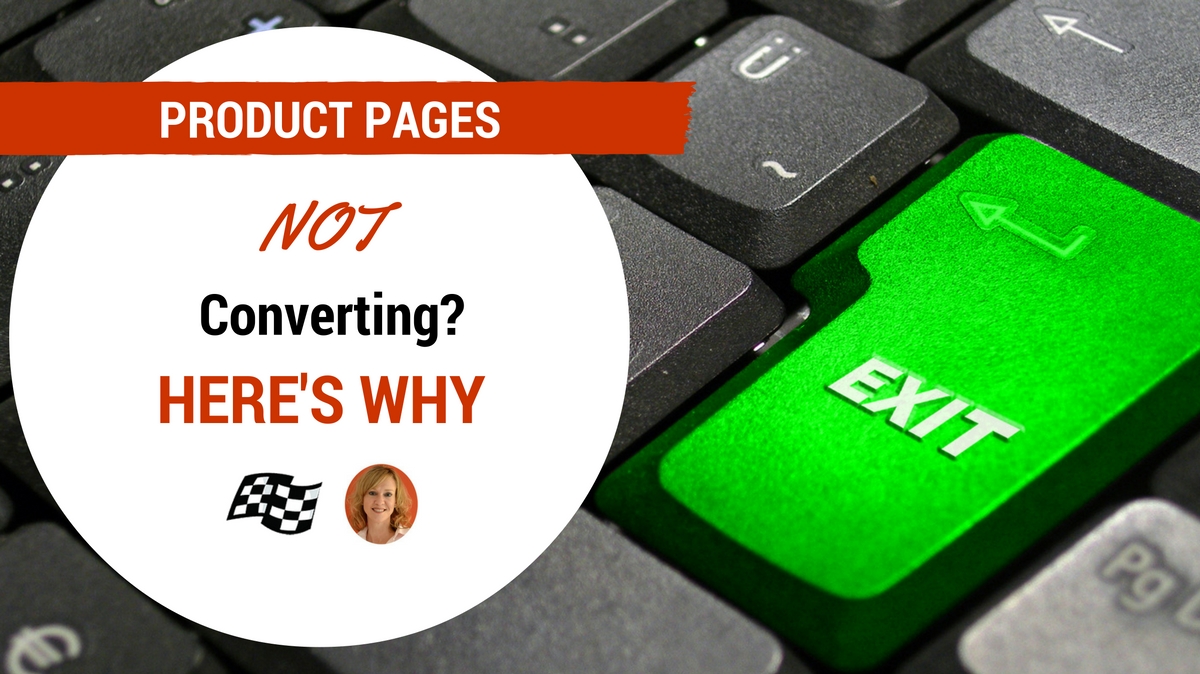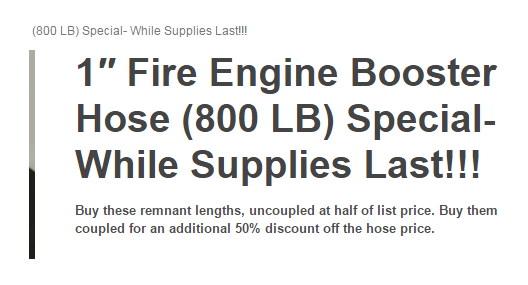
If you’re a small business owner offering a variety of products, you should be paying close attention to the web page content for those products.
Too little copy, and visitors will leave the site when they can’t find the product information they’re looking for. Too much copy, and you risk overwhelming the visitor, who will go elsewhere to escape the clutter.
Enter PPM’s Product Page Guidelines. You’ll find best practices, as well as what not to do on these critical pages. Read on to find a variety of tips to make your product pages ones that will convert on your site.
Title Tags
Let’s start with the basics. Title tags are still an important part of people finding your products in search. Your title tag should contain product keywords, as well as other helpful information for the searcher. In the following example, specifying the product name, as well as the product category, makes better use of valuable title tag real estate.
Previous Title:
4″ Double Jacket Fire Hose (AP-600D, 600 LB Test) | Company Name
New Title:
4″ Double Jacket Fire Hose – Attack Hose | Company Name
If you have a number of products, though, it’s not practical to craft custom tags for each page. Instead, use the example above as a formula to input titles more efficiently.
Product Name – Product Category | Company Name
Meta Descriptions
This is your golden opportunity to persuade the searcher to click through to your site. Use action verbs and highlight main features of the product. Include a call to action or remind searchers about your shipping policy. Keep this at 160 characters or less to avoid having the description cut off in search results. Check out the description for the same product page referenced above:
Previous Meta Description
<meta name=”description” content=”Flexible, strong and abrasion resistant. Manufactured to exacting municipal requirements. Designed to be the ultimate in industrial fire protection. Jacket Construction The jackets are woven evenly and free of defects, from spun polyester yarn that offers superior strength and wear characteristics. The warp yarn is standard 100% polyester. The filler yarns are high strength, low …” />
New Meta Description
<meta name=”description” content=”Choose strong, abrasion-resistant industrial fire hose manufactured to exacting municipal requirements. Free, same-day shipping available via UPS.” />
Remember to focus on the most important aspects of the product and your business. For this company, free, same-day shipping is a strong selling point, so it’s referenced again in the call to action at the end of the description.
![]() Remember to focus on the most important aspects of the product and your business.
Remember to focus on the most important aspects of the product and your business.
Product H1
Let’s talk about exclamation points. It’s kind of a pet peeve of mine, especially when they’re used in place of more persuasive language that would get the point across without punctuation overkill. Yes, I still use them; quite a bit actually! (See what I did there?) You shouldn’t be using them on your product pages though, especially in your main headings. Take this example:

Notice the use of three exclamation points in the product h1. This messaging is better left to the paragraph below the h1. And even there, the wording should convey the sense of urgency, making exclamation points unnecessary.
Searchers landing on a product page are actively seeking a solution to their problem, so make sure they know right away what the page is about.
Product Specifications
This is the portion of your product page where formatting becomes critical. Use bullets and bolding to make production specifications easily scannable.
![]() Use bullets and bolding to make production specifications easily scannable.
Use bullets and bolding to make production specifications easily scannable.
Here’s an example from a product page for a specific type of fire hose:
Pressure Ratings:
• 800# Working Pressure
• 1600# Test Pressure
• 3200# Burst PressureConstruction:
• Coupling: Barway/Hole Type
• Tube: Synthetic rubber / NBR Blend
• Reinforcement: Spiral braid synthetic yarn
• Cover: Red synthetic rubber
Without the proper formatting, specs will get lost in the shuffle, and searchers may miss key elements of the product that tell them it’s right for them. And while it’s tempting to use the description from the manufacturer, try to make your product specifications unique to your site, even if you sell the same products as another company.
Now you’re ready to tackle your product pages with a fresh perspective and boost your chances of conversion.
Checklist for Product Pages That Convert
- Save time writing unique title tags by using this formula: Product Name – Product Category | Company Name
- Use action verbs and include main product benefits in your meta descriptions. Don’t forget a compelling call to action.
- Don’t use excessive punctuation in headings; focus on keywords.
- Format product specifications for easy scanning.
